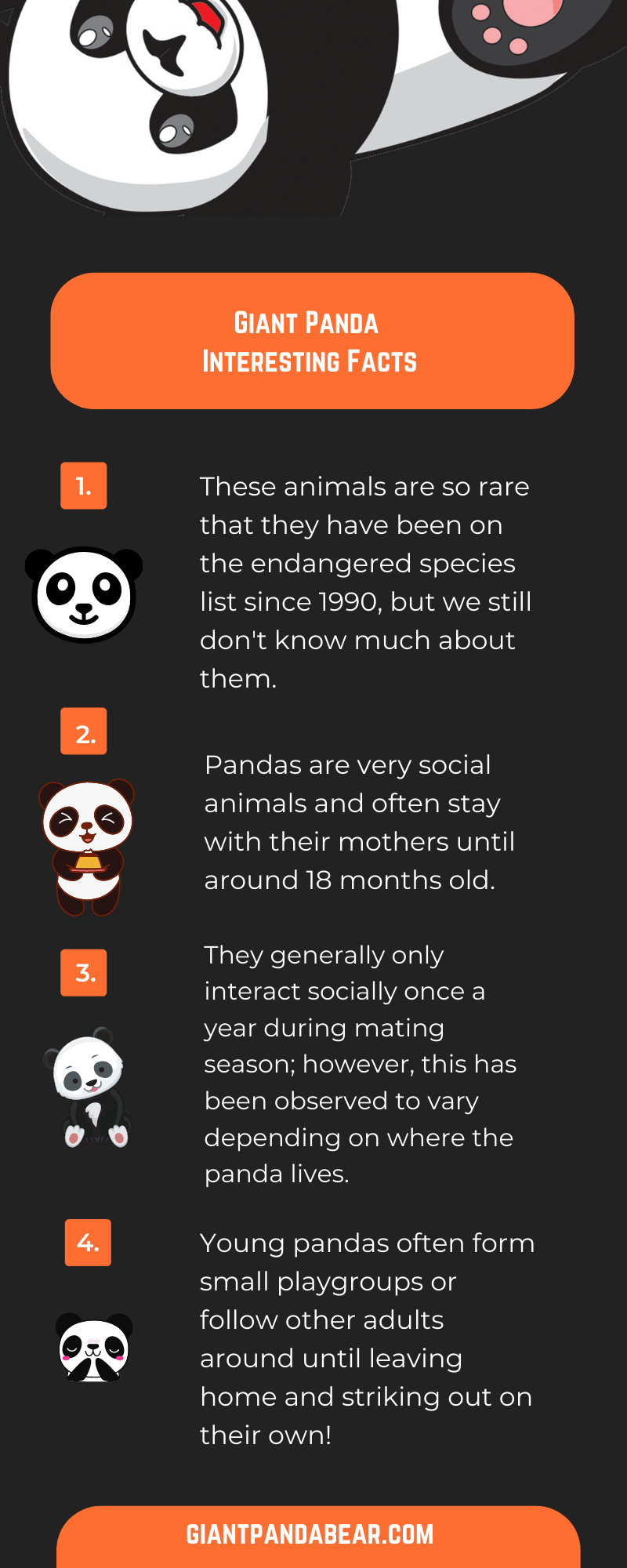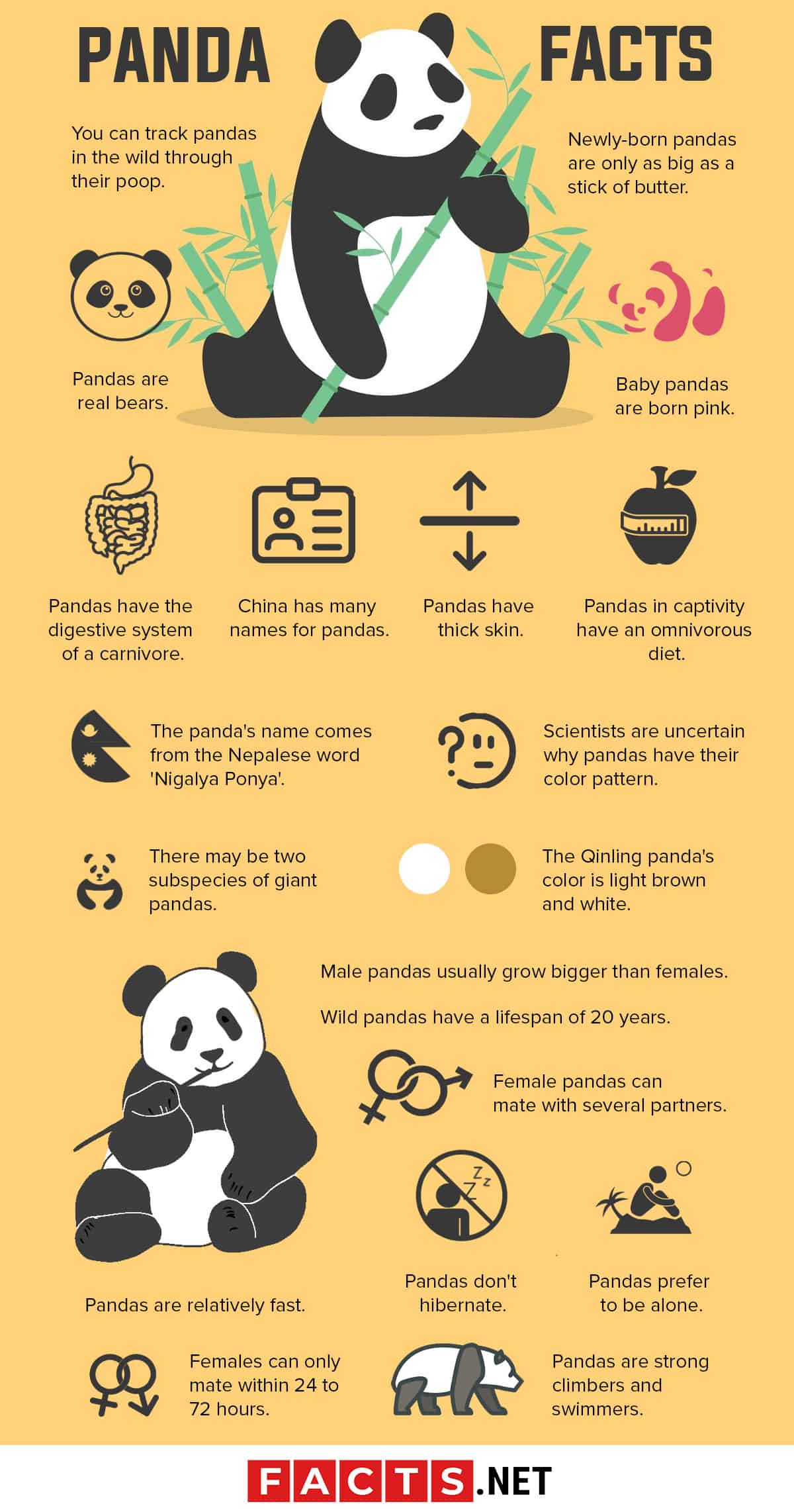You may think you know all there is to know about pandas, but did you know they’re on the endangered species list?
In this blog post, I will share some exciting facts about their life expectancy with you!
The average lifespan of a giant panda is 20 years in the wild and 27 years in captivity.
These animals are so rare that they have been on the endangered species list since 1990, but we still don’t know much about them.
This article will explore how long these pandas live and what we can do to help them survive!
How Long Giant Pandas Live?
Giant pandas typically live for about 20 years in the wild.
However, they can sometimes reach up to 30 years of age when in captivity!
Pandas are very social animals and often stay with their mothers until around 18 months old.
They will explore before setting out on their own at around five or six.
They generally only interact socially once a year during mating season; however, this varies depending on where the panda lives.
Watch Giant Panda Live 24/7.
Months after a panda’s birth, its mother typically separates it from the rest of the group to rear it on her own.
In captivity, giant pandas can live up to 30 years or more.
In the wild, however, adult giant pandas have a life expectancy of about 20 years.
For example, mating can occur at any time throughout the year in captivity.
Pandas also tend to live solitarily for most of their lives; however, they may occasionally interact with individuals outside the breeding season.
Young pandas often form small playgroups or follow other adults around until leaving home and strike out on their own!
They will generally get along well with others, provided that they are not competing for food resources when bamboo is scarce.

Pandas have a slow maturation rate and do not begin to reproduce until around four or five years of age.
They also experience puberty between four and eight years old, which is another reason they may leave home early upon maturity.
Puberty occurs about four to eight years for males and slightly later (between four and eleven) for females.
It takes longer for giant pandas than other bear species due to their low body weight.
The answer, however, isn’t as simple to find as you might think.
Pandas are an endangered species, and it’s hard for scientists to accurately estimate their life expectancy because few of them are left in the wild.
However, we can see how other animals like lions and elephants compare…
Where do giant panda bears live?
Pandas are native to China but used to be found throughout Asia.
Now there are only about 3000 in the wild, and scientists don’t think it will ever go back past that number.
Pandas aren’t considered endangered because their population has stabilized somewhat over time.
They’re just not doing well enough for them to gain any ground on other animals like elephants or lions, who have much larger populations than pandas currently do.
Pandas’ habitat is almost entirely limited to bamboo forests, specifically between latitudes 25° N and 30° N…
One reason why giant pandas may die so young has nothing to do with natural selection!

They’re also an endangered species, and Chinese citizens who work in the panda conservation industry often get bonuses for successfully breeding pandas within China’s zoos…
This is a common question that people ask themselves when they learn about endangered species.
Pandas are considered adults when they reach five or six, and females will have their first cubs around seven.
Where do pandas live?
They live in the bamboo forests of western China.
Panda’s habitat is in mountainous regions with temperate climates, leading them to higher altitudes during different seasons.
They prefer densely forested places near water sources like rivers or lakes.
Bamboo makes up 99% of their diet, so they require large areas filled with bamboo groves.
In the past, pandas were abundant in South China and could be found as far north as Beijing, but now they only live around Sichuan province’s mountain ranges.
Pandas have been reported to live across a range of 25 different mountain regions stretching over 500 miles from west to east.
This is about half the original territory that pandas used to occupy.
The total population is estimated at only around 1800 in the wild and 40 in captivity.
The panda’s habitat has been decreasing over time due to deforestation, making their natural living environment smaller and more fragmented, which makes it difficult for them to mate since they have a low reproduction rate of one cub every two years or so.
Today there are an estimated 1600 left in China, with another 200 outside its borders, but this number could be higher if all potential habitats were surveyed.

Despite these threats, conservation efforts had helped increase the population from 300 when they became endangered to nearly 2000 today!
Pandas are now considered vulnerable instead of endangered, which means that while their numbers aren’t looking great now, future conditions look promising.
They typically eat around 20 pounds of bamboo daily, so their habitat needs to consist mainly of dense forests with plenty of bamboo shoots.
Pandas also like to stay near water sources, even if it’s just a tiny brook, because they also need fresh running water for drinking.
The panda’s home range is about 15 square miles. Hence, pandas require large areas filled with these habitats, making them more at risk from deforestation since humans have been cutting down trees faster than panda population levels can replenish themselves naturally.
Pandas live about 30 years in the wild but can live up to 40 years in captivity which is one of several reasons captive-bred pandas have been released back into their natural habitats.
The average giant panda lives between 20 and 25 years old, although it varies depending on factors like location, age when captured, health conditions, etc.
Panda mothers help raise their cubs until around 18 months or two years old, after which both mother and baby will stay together until she becomes pregnant with her next cub.
Pandas reach sexual maturity around five or six, and females will have their first cubs around seven.
Conservation efforts had helped increase the population from 300 when they became endangered to nearly 2000 today!
Panda mothers help raise their young for 18 months or two years old, after which both mother and baby will stay together until she becomes pregnant with her next cub.
While pandas may seem slow and clumsy on land, these bears can run as fast as a horse!
Pandas are also good swimmers who love to take long baths and swim for fun.
Pandas used to live in most of China, but now they can only be found along the western mountains of Sichuan province, where there are high-altitude forests and rivers or lakes nearby…
Chinese culture reveres pandas, and they are a cultural treasure. Hence, people working in the panda conservation industry get bonuses for successfully breeding within China’s zoos. This means captive-bred pandas have been released back into their natural habitats instead of being raised by humans.
- Giant Panda Facts and History - December 29, 2022
- How Long Do Giant Pandas Live? - November 16, 2021
- Watch Giant Panda Cam Live | Giant Panda Cam - November 13, 2021





Be First to Comment